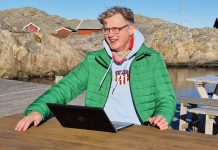Why is there an urgent need to meet these ambitious environmental targets that everyone’s set so far?
At Youwind, we believe that there’s no alternative — no “Planet B.” The scientific community has made it clear that we are on track to surpass the 1.5°C warming threshold agreed upon in the 2015 Paris Agreement. And we also want to consider: What is the world we want to leave to our children? In Europe, the targets for the green transition by 2030 are particularly ambitious, with countries mandated to play their part. There are already several measures in place to ensure these goals are met, and we see ourselves as an essential piece of that larger puzzle.
Why are developers under that pressure to optimize all aspects of their projects at this point?
Developers are under increased pressure to optimize every aspect of their projects due to a shift in market dynamics. Before 2020, the industry was already highly competitive, with a strong focus on managing CapEx and OpEx. However, in recent years, competition has intensified with the entry of new players, including oil and gas companies transitioning into offshore wind.
More recently, project costs have surged by 30 to 35 percent, causing developers to become much more cautious. Some have even had to step back, reconsider, or renegotiate agreements with governments due to the heightened pressure to ensure profitability. On top of that, supply-chain challenges are placing additional strain, making it essential for developers to carefully assess their capacity, manage contingencies, and distribute risks from the earliest stages of their projects.
Tools are needed for the early stages of offshore development. What is Youwind doing to address these challenges?
Youwind exists to help developers and consultancy companies to make informed decisions during the early stages of offshore-wind projects, where billions of euros are at stake. Offshore wind development is a complex, multi-variable optimization process, and while tools like Excel have their place, they simply can’t keep up with the intricate demands of this sector.
Youwind’s platform is designed to address both the technical and financial dimensions simultaneously. There’s a lot of investment at stake, so the earlier developers have control on these optimizations in both dimensions — engineering, and financial — the more confidence they can have on the options available to them.
What aspects of Youwind’s Pixel+ will help developers to specifically streamline their workflows?
Youwind’s Pixel+ release is a major upgrade, designed with both current and future challenges in mind. We’ve listened closely to user feedback, addressing not just past issues, but also anticipating the evolving needs of the industry. With Pixel+, we’ve streamlined the early-stage screening process — where to develop offshore wind farms — by integrating layout optimization and yield analysis into a single, more intuitive interface.
At Youwind, our team of wind-industry experts has built the tools we wish we had back in the 2010s, and now we’re making them accessible to a broader range of users. Usability was a key focus for this update, making workflows clearer and more efficient. In addition, every offshore wind project is unique, and Pixel+ allows for an unprecedented level of customization, enabling developers to tailor their projects with greater precision and ease.
How can Pixel+ help to accelerate project timelines?
With Pixel+, we have improved the process, usability, and speed of calculation, apart from adding numerous new features. Our tools allow users to develop more complex scenarios, increasing their industry knowledge. Pixel+ accelerates project timelines by dramatically improving the speed of calculations, allowing for more advanced sensitivity analyses. Offshore-wind development involves optimizing hundreds of technical and financial variables, all of which need to align for the best business case and technical feasibility.
With Pixel+, users can efficiently make the right decisions without compromising on accuracy. Again, there is a lot of money at stake. The platform combines both engineering and financial modeling in a single tool, enabling users to streamline their workflows and confidently move projects forward, knowing they have comprehensive insights at their fingertips.
Can you give some examples of Pixel+’s modeling capabilities and what makes this aspect of the software so powerful?
Pixel+ delivers some of the most advanced modeling capabilities available for offshore-wind development. With highly accurate yield calculations and unique wind-resource data through our integration with Vortex, we provide users with precise wind speeds for each turbine position — something that has generated great feedback from the industry. Another standout feature is the extensive GIS database, with more than 350 publicly available layers worldwide, allowing users to perform constraint analysis with just a few clicks.
This data, combined with the ability to upload and integrate custom information under strict confidentiality protocols, makes Pixel+ both powerful and secure. The platform also significantly enhances computational speed for wake modeling, enabling users to run multiple sensitivity analyses in parallel — key for assessing yield and wake losses.
Moreover, Pixel+ offers flexibility with water-depth inputs, allowing users to integrate more accurate bathymetric data, while our improved electrical modeling increases accuracy in grid losses and export system optimization. These enhanced capabilities are crucial, as export losses represent a significant portion of overall production losses in real projects after wake related ones. With Pixel+, users can seamlessly move from shallow calculations to deep-dive assessments of bankability yield.
What are the differences in how Pixel+ works with fixed bottom vs. floating wind farm development?
When it comes to fixed-bottom wind development, Pixel+ aligns with the maturity of the industry, offering robust capabilities to calculate foundation weights and optimize layouts. These well-established methods allow us to transparently meet the industry’s high standards for fixed-bottom projects.
For floating wind, Pixel+ brings additional sophistication, modeling floater sizes in terms of tonnage based on the selected technology for first CAPEX estimations. It also integrates mooring and anchor system modeling, helping users understand the footprint and optimize strings’ lengths. This allows for more precise layout designs, ensuring mooring systems don’t cross paths. On the electrical side, Pixel+ accounts for the unique challenges of floating wind, such as dynamic cables accounting for their buoyancy, and additional cable lengths, all while optimizing for array cabling and minimizing production losses.
What has been the market response so far? What are you seeing out there based on what you can offer?
Prior to the official launch, we offered exclusive access to our existing clients, allowing them to experience Pixel+ firsthand and provide feedback.
This feedback helped us fine-tune the platform, and the improvements have been so impactful that many clients have expanded the number of users on their teams. Pixel+ isn’t just for engineering experts — finance professionals, logistics teams, and managers are also benefiting from its strong traceability and communication features, which help ensure everyone stays informed.
Since the broader rollout, we’ve seen a surge in demo requests, reflecting the excitement around the new platform. In fact, we’ve launched a limited free trial promotion and currently have a waiting list of users eager to try Pixel+. Overall, the market’s response has been beyond our expectations, and we’re thrilled to share Pixel+ with the world.
Is there anything else you’d like to mention that we didn’t talk about?
One of the unique values that Youwind brings to the table is that our team truly understands the offshore wind industry from the inside out. Many of us have been in the same shoes as developers, consultancies, and turbine suppliers, so when new players want to enter this space, we’re able to offer more than just a software tool. We provide structured support from industry experts who have been through the process, in order to make the experience of using our platform the most fruitful.
Additionally, our involvement in six R&D funded projects across Europe, alongside prestigious research institutes and universities, such as DTU (Denmark), TU Delft (Netherlands), or TMU (Germany), further sets us apart. These collaborations ensure that, not only are we solving today’s challenges, but we are also looking ahead to future needs in the offshore wind sector.
MORE INFO youwindrenewables.com




























